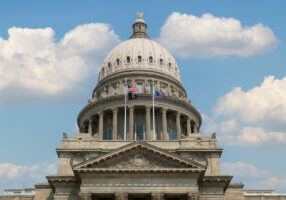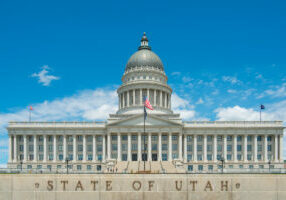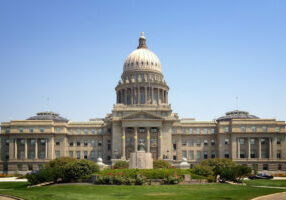The 2021 Idaho legislative session is already halfway complete. The Joint Finance Appropriations Committee has reviewed state agency requests as well as Governor Brad Little’s budget recommendations for FY 2022 and is now sending appropriation bills to the House and Senate floors for approval by the greater body. In his January State of the State Address, Governor Little called on the Legislature to provide over $400 million in tax relief, $126 million for state and local infrastructure projects, along with $80 million for future transportation funding. State and local police departments are also expected to receive additional funding next fiscal year.
Despite lawmakers moving, amending, introducing, and reintroducing countless bills—there are few actual results to report so far. During the first weeks of a session, lawmakers typically introduce bills and find consensus on major issues, before pushing more controversial legislation forward later in Session. However, this first half of the 2021 session has been dominated by discussion and debate around the executive branch’s authority in times of declared emergencies.
Emergency Power Struggle
Like other governors across the country, Governor Little has acted swiftly and unilaterally to deal with the unfolding COVID-19 public health emergency. The Governor’s critics, including some fellow Republicans, argue he is acting without the consent of the Legislature.
A measure to limit the Governor’s emergency powers, House Bill 135, received the support of more than two-thirds of the House in mid-February. The legislature’s most recent proposal on the topic—SB 1136—was sent to the amending order for further revision late last week. Similar to HB 135, SB 1136 would restrict the Governor’s emergency powers and declare all jobs as “essential”. This legislation would limit any emergency declaration issued by the Governor to 60 days unless extended by the legislature. Additionally, the legislation would prohibit the Governor from suspending any laws during an emergency —limiting his powers to suspend only administrative rules. The proposal has support from the Republican Senate and House leadership, and now awaits a full hearing in the Senate State Affairs Committee.
COVID-19
Idaho continues to see declining COVID-19 positivity rates and new cases. Transparency on vaccine distribution has been vastly improved as a result of Governor Little’s executive order requiring local public health districts and healthcare providers to regularly report their data. Idaho has administered nearly 360,000 doses of vaccine—now ranking as one of the most effective states when it comes to COVID-19 vaccinations. In response to high vaccine demand and limited supply, the Department of Health & Welfare announced last Tuesday that the state will now require individuals seeking vaccination to provide proof of Idaho residency or employment.
Health & Welfare Budget
Enhanced FMAP rates, which are anticipated to be maintained through calendar year 2021, are bringing hundreds of millions of federal dollars to Idaho. However, federally-mandated enrollment requirements amidst the COVID-19 pandemic have driven higher enrollment numbers and higher per-patient spending. Subsequently, Idaho’s Medicaid Expansion costs for FY21 have come in much higher than expected and left hospitals and providers across the state scrambling to implement cost-saving measures to encourage adequate appropriations for FY22. Last week, the House narrowly passed a $367 million FY 2021 supplemental appropriation to the Division of Medicaid to pay for costs incurred last year. The increase in federal Medicaid reimbursements will be used to cover state budget shortfalls, but legislators remain concerned about rising Medicaid program costs.
Looking Ahead
The state of Idaho has already received roughly $900 million in federal COVID-19 relief funds—though most of the funds have yet to be appropriated. As Congress considers passing a larger economic relief package, Idaho could see hundreds of millions more in federal dollars in the coming months. Combined with the state’s unprecedented general fund surplus, Idaho legislators have an abundance of resources at their fingertips to take action on proposals that matter to Idahoans—including public education, transportation, and tax relief. However, as we continue to inch closer to the legislature’s target sine die, lawmakers will need to shift their focus from limiting the Governor’s powers to passing productive bills.













